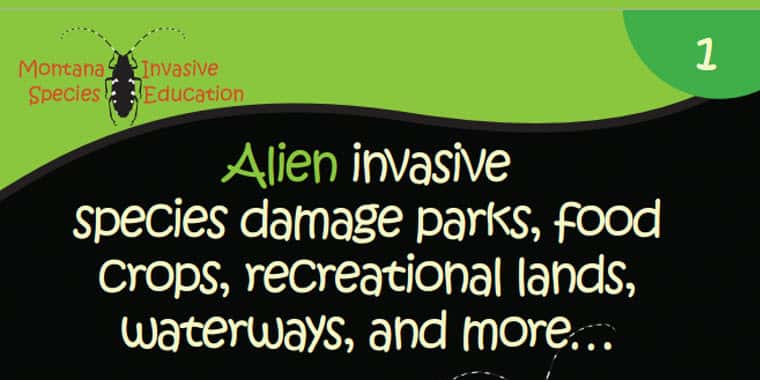Helena, Mont. – The Montana Agriculture in the Classroom program has released a comprehensive educational project on invasive species to help increase public awareness, identification, and reporting procedures.
Species which are non-native (invasive or alien) to Montana interfere and often destroy native plants, wildlife and livestock habitat, forests, waterways, and food crops. These species, which may not harm the environment in their native area, can cause destruction and major problems when introduced to a new environment.
“The impact to agriculture and the environment can total in the millions of dollars once an invasive species is introduced. The best defense is to prevent their introduction in the first place. Where introduction does occur, we need to increase our ability to respond with education to identify and report threats from potential invasive species,” said Director Ron de Yong.
Invasive species addressed in this project include: insects, plant diseases, nematodes, snails, clams, mollusks, crustaceans, reptiles, amphibians, fish, and noxious weeds. Over the past hundred years many plants, insects, and animals have been introduced into North America. Not all of them become invasive and push aside native varieties, but when they do, it can be devastating for the environment and economy, and even impact human health.
Invasive species use every trick in the book to hitch a ride to a new land – some have been spotted for sale on the internet, brought in as pets, or sold for ornamental landscaping. Step one is to learn about potential invasive alien invaders in your area. The Montana Invasive Species Education project includes identification cards, a poster, pocket guides, and other resource materials. Educators will be provided with lesson plans, a curriculum book on invasive species, and other materials aligned to state learning standards. The project is available on the website or by contacting Lorri Brenneman at LBrenneman@mt.gov.
This project is a cooperative awareness and educational campaign of the following: Montana Department of Agriculture – Agriculture in the Classroom; Montana Department of Natural Resources and Conservation; Montana Fish, Wildlife, and Parks; Montana Noxious Weed Education Campaign; USDA Animal and Plant Health Inspection Service; USDA Natural Resources Conservation Service; Montana Department of Transportation; Region 1 U.S. Forest Service; and Montana/Dakota Bureau of Land Management.
The Montana Department of Agriculture’s mission is to protect producers and consumers, and to enhance and develop agriculture and allied industries. For more information on the Montana Department of Agriculture, visit agr.mt.gov.
Source: Montana Department of Agriculture


